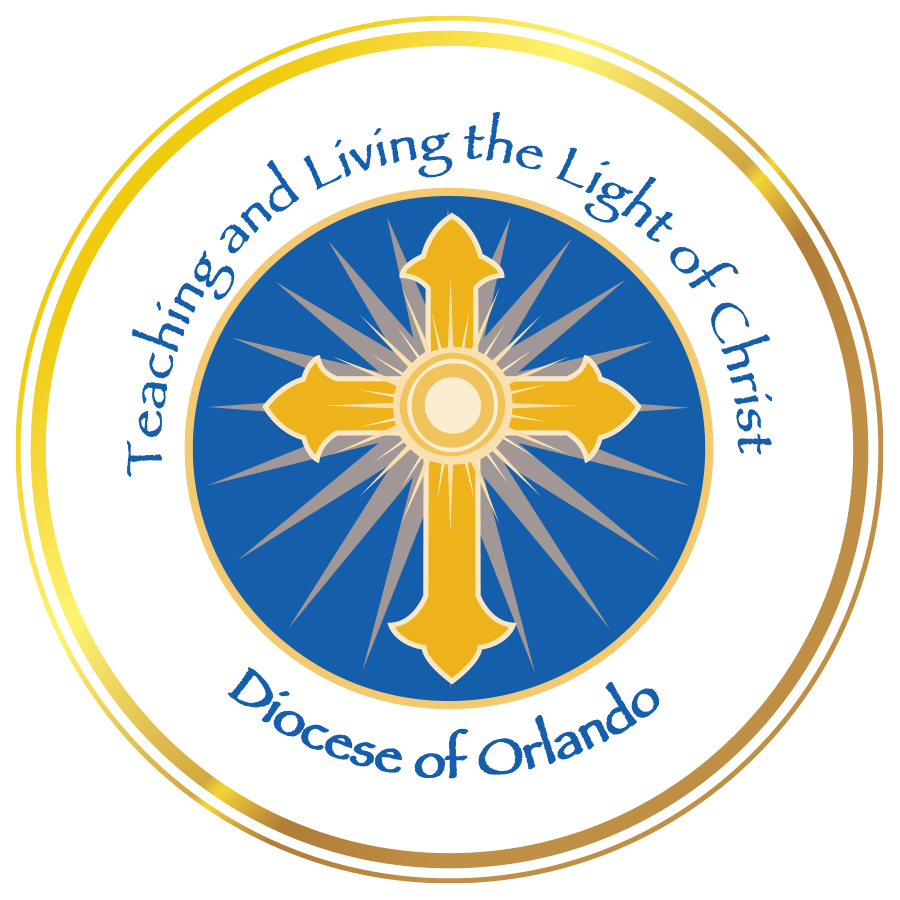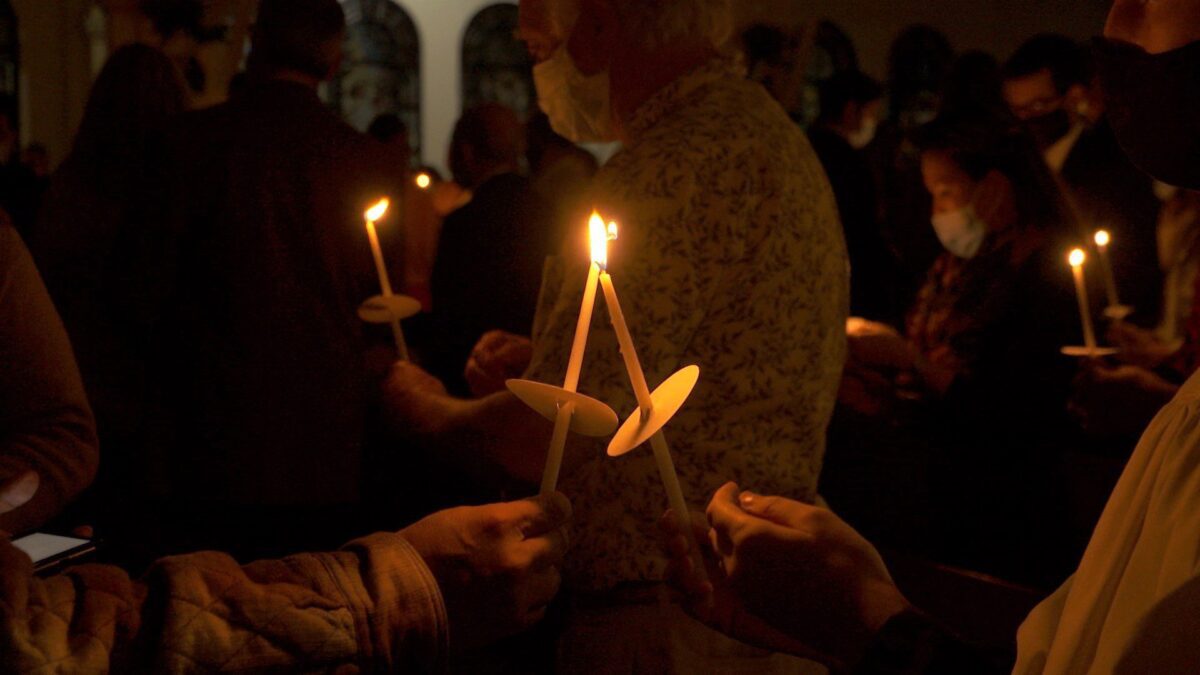FATHER MATTHEW HAWKINS, Parochial Vicar, St. James Cathedral, April 23, 2021
Previously, we discussed how the Paschal candle teaches us about Christ (Christology) and about our participation in the salvation He won for us (soteriology), but wait, there’s more! The candle also helps us understand the nature and mission of the Church Christ established (ecclesiology). Once the candle has been blessed outside, it is lit from (could we say “begotten of”) the fire and enters the unlit church representative of a world shrouded by sin and darkened by death. In the contest with darkness and death, light and life are now victorious. Jesus is what we call the primordial sacrament, “the image of the invisible God” (Col 1:15), the Son who makes present the otherwise unapproachable Father. Yet, in His humanity, He is limited by time and space, confined to a particular locale in a particular era. Therefore, He establishes a Church understood as the universal sacrament of salvation to perpetuate His presence down through the generations and to the farthest reaches of the world.
How is that Church, whose origin is Christ, to be recognized? We profess its four essential characteristics each week in the Nicene Creed: one, holy, catholic, and apostolic. The Church is apostolic which means it is founded on the teaching of the Apostles and is handed down through an unbroken line of successors (bishops). Upon entering the church at the Vigil, the priest lights his candle from the Paschal candle and then turns to the nearest members of the congregation. Those members then turn to light the next person’s candle and so on until the flame is passed successively throughout the church.
The Church is Catholic which means “of the whole” or universal and is understood in two different senses. First, that she contains the whole Christ: His teaching, His ministry, and His means of salvation—the flame that is passed around is the fullness of the original. Second, she encompasses the whole world gathered together as one: all people of all ages and customs. Every member in the church is to have a candle except those catechumens/elect who will be baptized that evening. They remind us of Jesus’ command to “go therefore and make disciples of all nations, baptizing them in the name of the Father and of the Son and of the Holy Spirit” (Mt 28:19).
The Church is holy, not because of the actions of the people but because of Him who gave His life “that he might sanctify her [the Church], having cleansed her by the washing of water with the word, that he might present the church to himself in splendor, without spot or wrinkle or any such thing, that she might be holy and without blemish” (Eph 5:26-27). The candle that “gives its life” for the light and life of others is to be made of beeswax. By its nature, beeswax does not drip or produce a sooty smoke, neither does it become rancid over time like other natural ingredients. On the contrary, beeswax not only remains clean itself but it is believed to actually cleanse the air around it by burning.
Lastly, the Church is one in doctrine, governance, and worship to reflect the oneness of God: “Holy Father, keep them in thy name, which thou hast given me, that they may be one, even as we are one” (Jn 17:11). Each member carries the flame of Jesus Christ in a particular way—unity in diversity without uniformity. If you have ever seen a candlelight procession, you will notice that from a distance all the lights appear as one, but upon closer inspection you realize that each has not lost its personal distinction.
The Church is also called the Bride of Christ, and one of the ends of marriage is procreation. When the water in the baptismal font is blessed, the Paschal candle is plunged three times. In some eastern traditions, wax is dripped into the water offering even richer symbolism of insemination. From this now fertile womb, new Christians will be born into the family of God.
St. Paul reminds us to “complete what is lacking in Christ’s afflictions for the sake of his body, that is, the church…to make the word of God fully known, the mystery hidden for ages and generations but now made manifest to his saints” (Col 1:24-26). Christ’s self-offering, like the Paschal candle, is perfect in itself, yet its application and dissemination remains incomplete. As members of His Body, the Church, we are to carry that one light until the world is set ablaze with the fire of His love.

